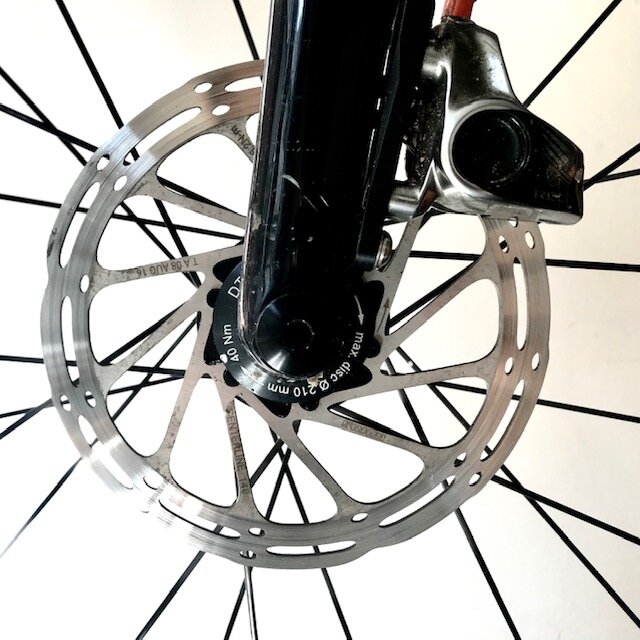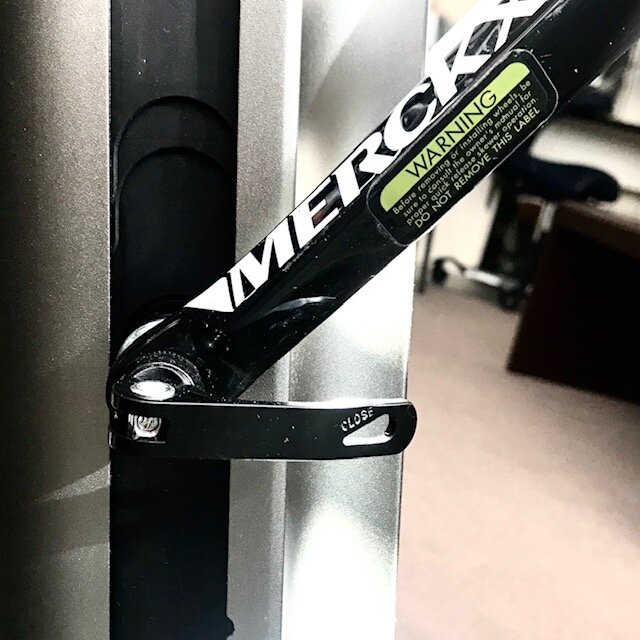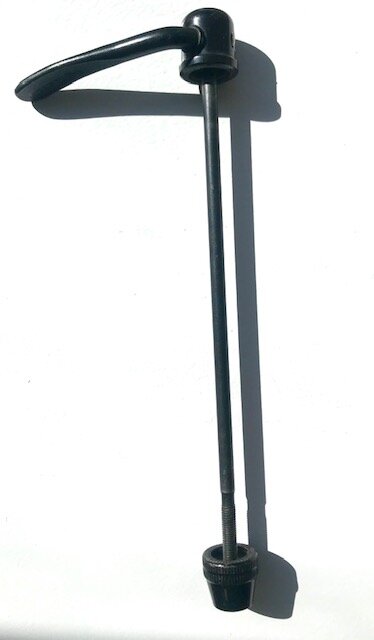No Jargon guide to indoor cycling setup
/How to turn your bike into a stationary bike
Stuck at home? Cabin fever kicking in? Watching your fitness drift away? If you have a bike and would like to set it up at home as a stationary bike, this is a simple, no jargon guide to how to do it and what to get.
Turbo Trainer
A turbo trainer is the thing that you can attach your bike to, to make it into a stationary bike. There are a few different systems out there, but which turbo trainer should you get?
Smart turbo
This is the latest technology. “Smart” means the turbo trainer can “talk” to an app on your phone or laptop and be controlled by it. For example, some apps can simulate routes and while you riding, the app will change the resistance of the turbo trainer to mimic a hill climb or flat grounder downhill. Some apps supply you with training plans, from building power over a few weeks to preparing for an Ironman over 8 months. When the app dictates the resistance of your turbo trainer, this is called in “ERG mode”.
A wheel on dummy turbo
Dummy turbo
This is the original type, it used to be called “Mag trainer”, “ Fluid Trainer”, “Wind trainer”, while the names describe how the resistance is generated, these days they’re all just dummy trainers! Only in a sense that you have to shift the gear on your bike or the trainer to change the resistance, and your app cannot talk to the turbo to make it harder to ride.
Direct Drive
This means when you mount your bike on to the turbo, you’ll need to take the rear wheel off and put the chain around the cassette on the turbo (easier that you think). The advantage of this is that the resistance won’t wear out your tyre and when you ride, it feels like riding on real road (as oppose to riding a bike with the brakes on). This type on turbo will work for both quick release wheels or through axle type (see below for explanation).
Wheel on
This means your bike goes on the turbo with the rear wheel on, the tyre sits directly on a metal roller which creates resistance to make it a workout. While it sounds easy, the downside is that the heat and friction will wear out your tyre quickly to the point making it dangerous to ride on the road. The bit of grit and glass stuck in your tyre will also wear out the turbo trainer. Using a turbo specific tyre will solve this issue, but you’ll need to change it back to normal tyre when you get back on the road. So in reality, what people do is that they use a spare rear wheel with a turbo tyre on for the trainer (often donated by a cyclist friend who has one that is too worn on the rim).
So, what should I get?
Splurge but will last the longest
So, at the moment the most “desirable” set up would be a “Smart Direct Drive” turbo with an interactive app. This is obviously the most expensive option from £450 to over £1000. Top end of the scale we have Wahoo KICKR and Tacx Neo, their non-foldable version but basically-the-same-thing are Wahoo KICKR Core and Tacx Flux. You’ll also need a cassette that has the same number of cogs on your bike and mount it on to the turbo (see below for explanation), although some companies can do this for you before shipping it out.
I had the Tacx Flux for a year, did 200+ hours of training on it and decided to sell it to a friend and “upgrade” to Wahoo KICKR because you can add a climbing simulator (the thing that attaches to the front of your bike to make it go up and down to simulate uphill / downhill). I actually found the cheaper Tacx Flux was better. This is because on the Wahoo KICKR, when doing a hard training set on ERG mode, once your legs are fried and cadence drop, it gets harder and harder to pedal to the point that you need to switch off ERG mode or if you’re so stuck, restart the app. On the contrary, on a Tacx Flux, when it senses you’re fried, it’ll get easier for you to pick up speed again before engaging into ERG mode again.
A smart Direct Drive turbo trainer with a climbing simulator.
Middle of the range with a little bit of faff
In the medium category, you can get a “smart wheel on” turbo trainer from £250-£450. Check out the Wahoo KICKR Snap, Kinetic Smart rock and roll turbo (let’s you rock side to side). Remember, you’ll also need to get a turbo tyre and/ or a spare rear wheel for this set up.
Budget to no budget at all
The most economical option would be adding sensors to a dummy turbo, which these days you can pick up for less than £100. If you have seasoned cyclists friends/ belong to a club, they’ll be getting rid of their old one and probably happily give it to you. Be sure to use a Turbo specific QR skewer, which has a rounded end on both side to fit on to the turbo trainer. You can still add sensors on to your bike so that when you use an app, it’ll tell you how far you have gone, your speed and cadence (how quickly you’re pedalling).
ANT+ and Bluetooth
Between the smart turbos, your phone or your computer or your bike computer they “speak” either ANT+ or bluetooth, some are “bilingual”. If you’re adding an external sensor such as a speedometer with cadence or a power meter, you’ll need the one that can talk to your turbo and your app. So make sure you check that they’re compatible. If in doubt, get a dual band sensor (Topeak Duoband sensor) that is both ANT+ and Bluetooth then you’ll know for sure it would work with whatever you got.
Other things to consider before buying a turbo trainer:
How are your wheels attached to your bike? Quick release (this is the traditional road bike set up where the wheel is attached to the bike with a skewer that you twist and flip a lever to fasten. ) or Through Axle (this is the new type road or mountain bike way of having an axle that goes all the way through. If you don’t know which type you have, look at the bottom of the fork, if it’s an open end U shape, it’s a QR, if it’s a closed circle, It’s for through axle.
Image 1: Through Axle disc brake type. Image 2: Quick Release (QR) skewer. Image 3: Turbo specific round ended QR skewer.
Which cassette do I need?
The first question is - how many speed? For road bikes, the newest ones will likely to be 11 (even 12!) speed. 10, 9, 8 speed still exist if you’re bike is older than 5 years or a low end one. This means you have 11 / 10 / 9 / 8 cogs on your cassette (the sprockets on the rear wheel). So if you’re searching for a cassette with 10 cogs on, you would type in the search bar “10 speed cassette”. If you have Shimano or SRAM system (this is often printed on the crank and in very small etching on the cassette) you can get either a Shimano or SRAM cassette, they’re inter-compatible. If you have Campagnolo system on your bike, then you’ll need a Campagnolo specific cassette because the cog spacing is different. Make sure you get a like for like one, so if your bike has a 11-28T (smallest cog has 11 teeth, biggest cog has 28 teeth) 11 speed cassette, then be sure to get a “11-28T 11 speed cassette”. If unsure, just look closely, you’ll find all the info in tiny writing on your cassette.
Summary
£1000+ - top range direct drive smart turbo + cassette + an app of your choice.
£500-£800 - mid range direct drive smart turbo + cassette + an app of your choice
£300-£450 - smart wheel on turbo + spare rear wheel with turbo tyre
Less than £100 to free - dummy wheel on turbo + turbo specific QR skewer + spare rear wheel with turbo tyre + speed / cadence sensor
I am fundraising for RNLI this year, if you found the blog useful, I’d be very grateful if you can support this charity.








